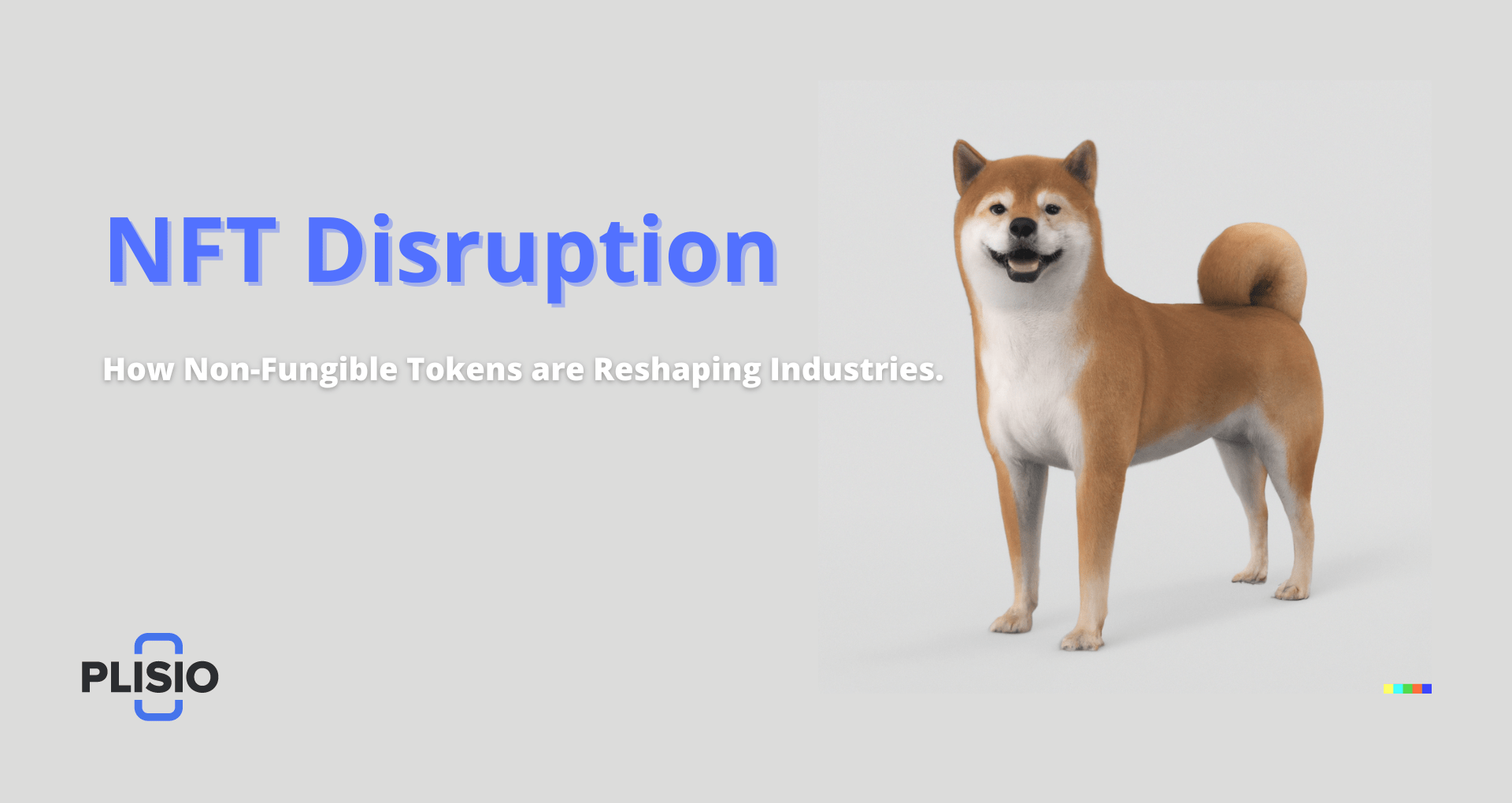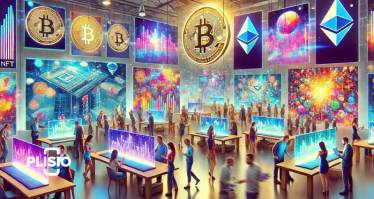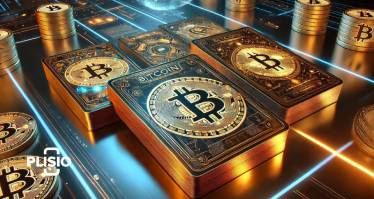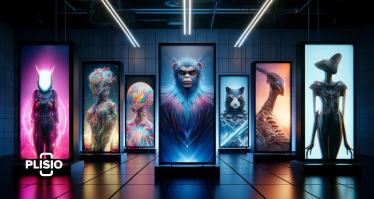NFT Disruption: How Non-Fungible Tokens are Reshaping Industries.

NFTs, while rooted in blockchain technology that has been in existence for years, truly soared in prominence starting in 2020. Their meteoric rise has been especially notable within the realm of digital art, transforming how artists monetize their work. This upswing in NFT adoption has been met with a mix of enthusiasm and skepticism. While many laud the innovative possibilities they offer for digital ownership and royalties, concerns about their speculative nature, market volatility, and potential for fraudulent activities persist. In this piece, we'll delve deep into the multifaceted world of NFTs, offering insights on their benefits, challenges, and what every enthusiast should be aware of.
What is an NFT?
Non-fungible tokens, or NFTs, are unique digital assets securely stored on a blockchain, making waves in various domains ranging from art to virtual real estate and even social media posts. Unlike traditional currencies and most cryptocurrencies, which are fungible and can be exchanged on a one-for-one basis, NFTs are distinguished by their distinctiveness. This means each token carries its own identity, solidified by a specific digital signature, rendering it irreplaceable.
At their core, NFTs represent both tangible and intangible items. A buyer of an NFT acquires the claim of owning the 'original' digital copy, akin to holding an original artwork or a master music recording. However, it's essential to understand that this doesn't confer exclusive rights to the content. One can liken it to the Mona Lisa: while there's a unique original, countless replicas exist.
This exclusivity and provenance of NFTs derive from their inherent metadata, which provides each token a unique identity. For instance, even if you replicate the same digital art piece a thousand times and create an equal number of NFTs for them, each token will make every piece distinct. Collectors can thereby claim to own a particular edition, much like having a serialized trading card. To amplify this notion of rarity, creators often introduce variations within these digital collections, enhancing the desirability and value of certain tokens over others.
Furthermore, while the term 'non-fungible' might seem intricate, it essentially means that each NFT has its own unique value and cannot be exchanged on a like-for-like basis. This intrinsic value differentiation is akin to trading rare physical collectibles; each item has its distinct market value based on its rarity and demand.
There are also significant attributes that enhance the allure of NFTs:
Indestructibility: All NFT data sits on the blockchain through smart contracts, ensuring each token is immune to destruction, removal, or replication. This gives owners genuine possession rights, a stark contrast to digital purchases like music or eBooks, where users often acquire just a license.
Verifiability: Blockchain storage means historical ownership can be traced to the origin, providing a transparent lineage for items and eliminating the need for third-party authentication.
In essence, NFTs are reshaping the way we perceive digital ownership, providing a blend of authenticity, rarity, and security in the fast-evolving digital landscape.
How do NFTs work?
NFTs, or Non-Fungible Tokens, have emerged as a revolutionary cryptographic asset that thrives on the blockchain — a decentralized public ledger known for its transparency and immutable recording of transactions. At their core, NFTs are distinctive digital assets, each encoded with a unique identification that sets them apart from every other token. This unparalleled individuality embedded in their very DNA is what makes them "non-fungible," signaling that each token is irreplaceable and one of a kind.
Contrasting this with more conventional assets, like cryptocurrencies or fiat currencies such as Bitcoin or dollars, we find a fundamental difference. These traditional assets are fungible, meaning they are interchangeable — one Bitcoin or dollar holds the same value as its counterpart. NFTs, on the other hand, are akin to owning a unique piece of art; no two are identical.
This burgeoning digital space owes much to platforms like Ethereum, which initially laid the groundwork for NFTs with token standards like ERC-721. While Ethereum remains dominant in the NFT realm, other blockchains such as Solana, Cardano, and Neo have jumped into the fray, offering their own unique NFT blueprints. Despite its fame, Bitcoin's architecture doesn’t directly support the creation or exchange of NFTs.
Understanding the lifecycle of an NFT requires a grasp of the "minting" process. Content creators breathe life into NFTs through minting, which essentially means registering a digital representation of their creation on a blockchain network. Once minted, these tokens become tradable assets. Despite the ease with which digital content can be duplicated, the underlying ownership of an NFT remains rock-solid, secured by cryptographic mechanisms. Even if one were to replicate the digital file a token represents, the blockchain ensures the original ownership remains unaltered, unless willingly transferred.
NFTs are not confined to the digital realm alone. Their adaptability extends to tangible real-world assets like art pieces or real estate. By transforming these assets into tokenized forms, NFTs bring forth a streamlined way to trade, enhancing efficiency and reducing potential fraud risks.
In conclusion, as we venture deeper into the digital age, NFTs continue to redefine the contours of ownership, authenticity, and trade in the world of both tangible and intangible assets.
What are NFTs used for?
Non-fungible tokens (NFTs) have reshaped the digital landscape, introducing a novel way to own, trade, and showcase assets, both digital and physical. From its roots in the gaming and collectibles industry, where players became the irrefutable owners of in-game assets, to more widespread applications today, the realm of NFTs has exploded in potential and value.
By mid-2017, the NFT market had already witnessed a whopping $25 billion in sales, which included $21 billion from secondary sales alone. Gamers and collectors alike have leveraged NFTs to claim ownership of unique in-game items, such as avatars, costumes, and virtual currencies. Beyond the gaming world, virtual worlds themselves have seen enthusiasts invest in everything from digitized real estate to avatar outfits. Such vast potentials also birthed opportunities for artists and creators. Musicians, for instance, now sell pieces of their work as tokenized digital assets, with artists like William Shatner generating a passive income through the sale and resale of digital collectibles.
Yet, the magic of NFTs isn't confined solely to the digital realm. They've bridged the gap between the tangible and intangible. Physical assets, including real estate, luxury items, and traditional artwork, can now be tokenized using NFTs. This fusion of physical and digital assets streamlines ownership verification, potentially reduces fraud, and makes trading more efficient.
Furthermore, NFTs have become a beacon in the world of art and music. While physical pieces of art can be tokenized and traded as NFTs, digital art—like videos and images—has gained significant traction. Many NFT owners proudly display their acquisitions as profile pictures on social media or use them as backgrounds during video calls. Beyond art, traditional collectibles like sports trading cards have been rejuvenated through NFTs. Leading sports leagues are now immortalizing legendary moments as digital assets available for fans globally.
One of the most intriguing prospects of NFTs is their potential role in virtual spaces, often referred to as the 'metaverse'. As people increasingly immerse themselves in these crafted digital realities, exclusive NFTs could become status symbols, underscoring their owner's unique digital footprint.
In summary, NFTs, with their unique combination of security, verifiability, and interoperability, have birthed a digital renaissance, changing the way we view, own, and trade assets in the modern era. Whether it's the music we listen to, the games we play, or the virtual worlds we inhabit, NFTs are set to redefine the boundaries of ownership and creativity.
Why do NFTs have value?
Non-fungible tokens (NFTs) derive their value from a combination of factors, chief among them being supply and demand. Their inherent rarity, coupled with surging demand from an eclectic mix of gamers, aficionados, and astute investors, often sees their prices skyrocketing.
This unique blend of scarcity and desirability means NFTs don't just serve as collectibles but can also be lucrative investments. For instance, in the virtual realm of Decentraland, a strategic gamer astutely acquired 64 individual plots, merging them into a single expansive estate. This savvy amalgamation, christened as "The Secrets of Satoshi's Tea Garden", garnered a whopping $80,000, attributed to its prime location and accessibility.
Venturing into the fast-paced world of digital racing, a high-stakes investor shelled out an impressive $222,000 for a fragment of the digital Monaco circuit in the F1 Delta Time universe. More than just a track segment, this NFT acts as a revenue stream: it entitles its holder to a 5% cut from all race-related transactions on that stretch, encompassing both race entry fees and related activities.
In essence, the allure of NFTs extends beyond mere ownership. Their potential as a source of passive income and the prestige associated with unique digital possessions makes them increasingly attractive in the evolving digital economy.
Real-life NFT examples
The NFT landscape has been evolving for nearly a decade, showcasing a myriad of captivating projects that have garnered significant attention. Here are some notable NFT initiatives:
- Quantum - Taking us back to 2014, Quantum emerged as the pioneering NFT. Conceptualized by Kevin McCoy and Anil Dash, it embodies a video snippet crafted by McCoy's spouse.
- CryptoKitties - 2017 saw the advent of CryptoKitties, a groundbreaking NFT endeavor. This platform, housed on the Ethereum blockchain, enabled enthusiasts to collect and swap distinctive digital felines.
- GucciGhost - The high-end label, Gucci, embarked on an innovative journey with artist Trevor Andrew. This alliance resulted in unique NFTs inspired by Gucci's intellectual assets.
- Everydays: The First 5000 Days - An NFT representing a mosaic of 5,000 sequential daily images, all captured by Mike Winkelmann, also recognized as Beeple.
- Nyan Cat - Chris Torres brought to life the 2011 famed cat meme through an NFT animation. This digital artwork fetched a staggering $600,000 at auction.
- RTFKT - Venturing into the digital fashion realm, RTFKT unveiled exclusive virtual sneakers and collectibles. They've teamed up with renowned brands such as Byredo and Rimowa and influential artists like Steve Aoki.
- Decentraland - A captivating 3D universe constructed atop the Ethereum blockchain, Decentraland is a hub where users can manifest avatars, erect edifices, and mingle with peers.
- Bored Ape Yacht Club (BAYC) - This collection features distinct digital primates. These programmatically curated apes vary in rarity, making some more sought-after than others.
- NBA Top Shot - A collaboration between the NBA and Dapper Labs (CryptoKitties' brains) in 2020, this marketplace allows fans to purchase and swap riveting basketball moments.
- Grimes’ WarNymph - Grimes, a multifaceted artist and singer, ventured into the NFT realm with WarNymph. This collection secured her a cool $6 million.
- CryptoPunks - These pixel-art characters, a set of 10,000 uniquely crafted images, were the brainchild of the software gurus at Larva Labs.
The trajectory of NFTs has been marked by these illustrious projects, showcasing the vast potential and diverse applications of this digital domain.
Why are NFTs so expensive?
The staggering price tags attached to certain digital image NFTs might seem perplexing, especially when compared to renowned art pieces like those of da Vinci. But what drives these astronomical prices for non-fungible tokens? Here's a dive into the core factors:
- Limited Availability - Inherently, NFTs are distinctive, with each having its own identity. This exclusivity implies there's a singular version of each, and the rarity naturally amplifies their value concerning demand. Consider, for instance, the CryptoPunks initiative. With a mere 10,000 distinctive entities available, the collection's value has surged to a whopping $2 billion.
- Verifiable Authenticity - Being anchored to a blockchain, NFTs carry the advantage of effortless authenticity verification. The metadata of each NFT underscores its distinctness, rendering replication impossible. Counterfeiting an NFT is practically unfeasible, fortifying their overall valuation. For perspective, the priciest NFT transaction till date, “The Merge” by Pak, commanded an eye-watering $91.8 million.
- Prestige and Acclaim - There's a certain allure to the prestige of holding a singular NFT. Given the transparent nature of blockchain transactions, the price and the owner's digital wallet details are open for all to see. For some, this transparency translates to an elevated sense of accomplishment and the thrill of being in the limelight for owning a one-of-a-kind digital asset.
These factors converge, playing a pivotal role in the high valuations seen in the NFT marketplace.
What is an NFT marketplace?
The world of NFTs is ever-changing, yet most marketplaces for these tokens generally fall under one of three primary categories:
- Universal Marketplaces: These are open platforms where anyone can mint, purchase, or sell NFTs. "Minting" is the act of uniquely registering a token on the blockchain, making it available for purchase. While many of these platforms provide minting services, creators have the freedom to mint their tokens independently.
- Selective Marketplaces: Entry to these platforms is more exclusive. Artists typically need to apply for inclusion, and the marketplace handles the minting process. Sales and trades on these platforms are more regulated.
- Branded Marketplaces: These platforms sell NFTs that are either copyrighted or trademarked by the company that runs the marketplace.
To stay updated on the latest NFT releases, many traders create accounts across various marketplaces and also follow announcements on social platforms like Discord and Twitter. Platforms specialized for NFT information, such as Rarity Sniper and Rarity Tools, also exist. When there's a buzz around specific NFT launches, investors usually jump in swiftly.
Most NFT platforms offer guides to assist users in navigating their systems. After registering, it's advisable to link your digital wallet with the marketplace. Some platforms even provide an in-built wallet setup or have their own exclusive wallet, which sometimes offers benefits like reduced fees.
Examples of NFT Marketplaces:
- OpenSea: A leading NFT platform, OpenSea provides a plethora of NFT categories including art, games, fashion, and more. It also presents educational resources for its users.
- NBA Top Shot: A haven for basketball enthusiasts, this platform allows trading of NFT video clips of iconic basketball moments. It boasts a robust community and integrates social features like contests.
- Nifty Gateway: Catering primarily to art aficionados, Nifty Gateway showcases collections from renowned artists across various mediums. It's tailored for those aiming to invest in art with potential long-term value.
- Rarible: Operating on the Ethereum network, Rarible offers a space for the creation, trade, and acquisition of NFT art pieces.
NFT scams
NFT-related frauds are sadly prevalent. Here are some of the primary types to be cautious of:
- Phishing attacks: Be wary of suspicious links and pop-up ads on social media promoting the latest NFT offerings.
- Identity Deception: Be alert to imitation marketplace platforms, fake social profiles, and individuals posing as celebrities, promoting NFT collections.
- NFT Replications: Fraudsters may attempt to sell someone else's creation, presenting it as their genuine work.
- Price Inflation Schemes: Scammers might create a buzz around a particular NFT, inflating its value, then abruptly sell it, leaving investors with devalued items.
- Deceptive Mint Offers: Using high-pressure sales techniques, swindlers may trick users into a sham minting process. Instead of getting a new NFT, victims might inadvertently grant access to their digital wallets.
To safeguard yourself against potential NFT fraud:
- Implement standard cybersecurity protocols, including robust passwords and activating two-factor authentication.
- While keeping your cryptocurrency on online platforms might be convenient, consider using a cold wallet for better security. This refers to a physical device that stores your keys and assets offline, away from potential online breaches.
- If you're considering a sizable investment in NFTs, first conduct a smaller transaction to verify the process's legitimacy.
- Disregard unsolicited communications, such as unexpected direct messages or random NFTs sent to your digital wallet. They might contain harmful hidden contracts.
- Prior to purchasing NFTs, dedicate time to research and education. Browse online resources, reviews, and firsthand accounts to grasp the intricacies of the NFT realm and its associated risks.
What is the future of NFTs?
The realm of NFTs is still in its nascent stage, and while making definitive forecasts is challenging, we can make informed speculations based on the trajectory and significance they've gained so far. It's likely that NFTs will weave their way deeper into the mainstream fabric.
- Broadening Horizons: Beyond the confines of digital art, gaming collectibles, and other digital assets, businesses might harness NFTs in diverse sectors. Picture NFTs representing tangible assets like physical real estate, unique car models, or exclusive spaces in the burgeoning metaverse.
- Synergy with Emerging Tech: As the digital frontier advances, the confluence of NFTs with augmented reality (AR), virtual reality (VR), and artificial intelligence (AI) could lead to unprecedented interactive experiences. Imagine an NFT art piece that evolves over time using AI or AR tools that allow you to display and interact with your NFTs in the real world.
- Eco-friendly Evolution: With rising concerns about the environmental footprint of blockchain-based activities, it's plausible that there will be a concerted push towards greener NFT practices. We might witness the rise of eco-friendly platforms and protocols dedicated to NFT minting and trading.
- Legal and Regulatory Frameworks: As NFTs become more pervasive, we might see governments and regulatory bodies stepping in. This could entail creating robust frameworks to address copyright issues, fraud prevention, and ensuring that transactions align with global financial regulations.
- NFT Education and Awareness: As the technology permeates mainstream culture, institutions might offer courses or seminars on NFTs, helping people understand their significance, potential, and the intricacies of trading and creation.
In essence, while the NFT landscape is teeming with potential, its future will inevitably be molded by technological innovations, eco-conscious adaptations, regulatory frameworks, and the evolving dynamics of the industries it intersects with.




